GOOD OLD ROCK’N’ROLL!!! «Exclusive for Lossless-Galaxy collection» Part 3 (27 × CD • Remastered • 1960-2025)
Performer: Various Album / collection: «OLDER! Rock’N’Roll — 1St Press — Remastered» Part 3 Label: (c)(p) 1960-2025 生産ヨーロッパとアメリカ Source: Rip by KoGGaN™ scans by inet… Official DR value: •12•12•7•14•11•6•11•8•8•7•8•7•8•12•10•8/8•6•9•8•10•10•9•8•7•7•9•8• Catalog (Barcode): much… Genre / Style: Pop, Rock, Classic Rock, Pop Rock, Rock’N’Roll, Glam, AOR Year (info): 1960-2025 (249 × CD, 1St Press + Remastered, Collection—) Format: WV (image + .cue) Bitrate: lossless Covers: in archive Amount of
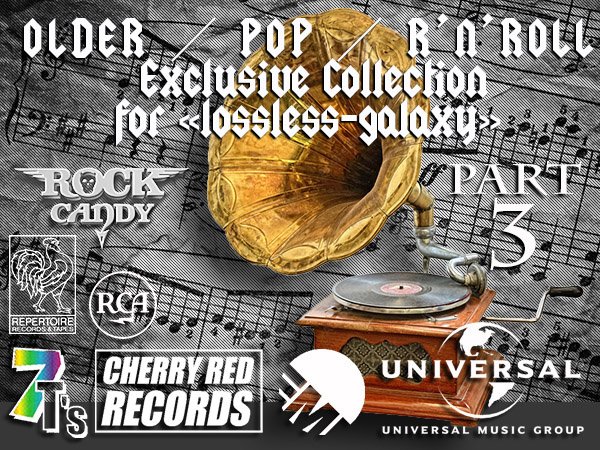
GOOD OLD ROCK’N’ROLL!!! «Exclusive for Lossless-Galaxy collection» Part 3 (27 × CD • Remastered • 1960-2025)
Performer: Various Album / collection: «OLDER! Rock’N’Roll — 1St Press — Remastered» Part 3 Label: (c)(p) 1960-2025 生産ヨーロッパとアメリカ Source: Rip by KoGGaN™ scans by inet… Official DR value: •12•12•7•14•11•6•11•8•8•7•8•7•8•12•10•8/8•6•9•8•10•10•9•8•7•7•9•8• Catalog (Barcode): much… Genre / Style: Pop, Rock, Classic Rock, Pop Rock, Rock’N’Roll, Glam, AOR Year (info): 1960-2025 (249 × CD, 1St Press + Remastered, Collection—) Format: WV (image + .cue) Bitrate: lossless Covers: in archive Amount of
05 10, 2025
GOOD OLD ROCK’N’ROLL!!! «Exclusive for Lossless-Galaxy collection» Part 2 (111 × CD • Remastered • 1960-2025)
Performer: Various Album / collection: «OLDER! Rock’N’Roll — 1St Press — Remastered» Part 2 Label: (c)(p) 1960-2025 生産ヨーロッパとアメリカ Source: Rip by KoGGaN™ scans by inet… Official DR value: •8/8•12•6/5•14•6•12•11•10•6•11•11•9•13•11•11•13•8/7•8•8•5•6•10• •11•9•7•6•9/9•7•4•4•6•7•7•7•8•8•8•7•7•9•7•12•6•5•7•5•8•7•8•8•8•6•11•10•10•10•7•12•13•6•8• •12•5•7•13•9•7•7•12•12•12•8•6•7•6•10•7•6•12•6•12•6•7•7•13•12•10•7•6•6•9•5•11•6•8•9•12•14• •11•11•14•6•9•11•11/11•8•11•12•13•11/10•12• Catalog (Barcode): much…
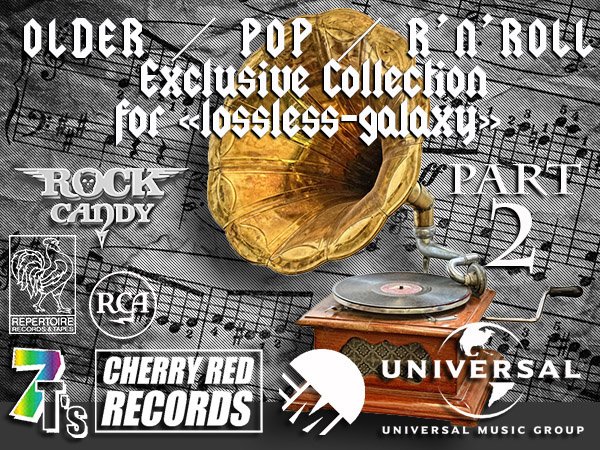
GOOD OLD ROCK’N’ROLL!!! «Exclusive for Lossless-Galaxy collection» Part 2 (111 × CD • Remastered • 1960-2025)
Performer: Various Album / collection: «OLDER! Rock’N’Roll — 1St Press — Remastered» Part 2 Label: (c)(p) 1960-2025 生産ヨーロッパとアメリカ Source: Rip by KoGGaN™ scans by inet… Official DR value: •8/8•12•6/5•14•6•12•11•10•6•11•11•9•13•11•11•13•8/7•8•8•5•6•10• •11•9•7•6•9/9•7•4•4•6•7•7•7•8•8•8•7•7•9•7•12•6•5•7•5•8•7•8•8•8•6•11•10•10•10•7•12•13•6•8• •12•5•7•13•9•7•7•12•12•12•8•6•7•6•10•7•6•12•6•12•6•7•7•13•12•10•7•6•6•9•5•11•6•8•9•12•14• •11•11•14•6•9•11•11/11•8•11•12•13•11/10•12• Catalog (Barcode): much…
05 10, 2025
GOOD OLD ROCK’N’ROLL!!! «Exclusive for Lossless-Galaxy collection» Part 1 (111 × CD • Remastered • 1960-2025)
Performer: Various Album / collection: «OLDER! Rock’N’Roll — 1St Press — Remastered» Part 1 Label: (c)(p) 1960-2025 生産ヨーロッパとアメリカ Source: Rip by KoGGaN™ scans by inet… Official DR value: •8•11•12/12•8•12/12•8•9•11/11•10•11•11•9/9•7/8•7•7•10•11•10•12• •12•13•12•11•5•7•12•10•11•7/8•9•10•10•10•7•10•9•10•12•10•12•7/8/7•7•11•10/9•12•7•8•10/12• •9/9•11•9/8•8•8•11/12•8•10•7•9•6•8•9•8•7•9•7•10•7•10•11•9•8•8•7•11•12•9•11•8•11•11/11•12•

GOOD OLD ROCK’N’ROLL!!! «Exclusive for Lossless-Galaxy collection» Part 1 (111 × CD • Remastered • 1960-2025)
Performer: Various Album / collection: «OLDER! Rock’N’Roll — 1St Press — Remastered» Part 1 Label: (c)(p) 1960-2025 生産ヨーロッパとアメリカ Source: Rip by KoGGaN™ scans by inet… Official DR value: •8•11•12/12•8•12/12•8•9•11/11•10•11•11•9/9•7/8•7•7•10•11•10•12• •12•13•12•11•5•7•12•10•11•7/8•9•10•10•10•7•10•9•10•12•10•12•7/8/7•7•11•10/9•12•7•8•10/12• •9/9•11•9/8•8•8•11/12•8•10•7•9•6•8•9•8•7•9•7•10•7•10•11•9•8•8•7•11•12•9•11•8•11•11/11•12•
05 10, 2025
Жанры
Lossless Galaxy Release
Русская музыка
--Поп
--Рок
--Панк
--Альтернатива
--Металл
--Рэп, Хип-Хоп, R'n'B
--Джаз и Блюз
--Фолк
--Шансон, Авторская песня
--СССР
Зарубежная музыка
--Pop
--Rock
--Hard Rock
--Progressive & Art-Rock
--Pop-Rock & Soft Rock
--Instrumental Rock
--Heavy, Traditional, Industrial Metal
--Power, Gothic, Sympho Metal
--Thrash, Speed, Groove, Modern Metal
--Death, Melodic Death, Doom, Dark Metal
--Black, Pagan, Folk, Viking Metal
--Alternative
--Punk
--Disco, Eurodance
--Rap, Hip Hop, R'n'B
--Reggae, Ska, Dub
--Jazz, Blues, Soul
--Folk, Country, Ethnic
--Electronic, Ambient, New Wave
--House, Techno, Trance
Другие жанры
--New Age, Relax, Meditative & Flamenco
--Chillout, Lounge, Downtempo, Trip-Hop
--Drum & Bass, Jungle, Breakbeat, IDM
--Classical / Классическая музыка
--Soundtrack
--Музыкальные сказки
Vinyl Rip
HI-Res / DVD-Audio / DTS
--SACD
--DSD
--DVD-Audio
Сборники Lossless-Galaxy
Альбомы 2022
Альбомы 2023
Альбомы 2024
Теги
1st Press 2022 2023 2024 2025 70... AOR Black Metal Blues Blues Rock Bootleg Series Classic Rock Death Metal Discography Exclusive for Lossless-Galaxy Folk Rock Fusion Hard Rock Heavy Metal Hi-Res Japanese Edition Jazz Jazz Rock lossless Melodic Death Metal Melodic Rock Modern Electric Blues Pop Pop Rock Power Metal Prog Rock Progressive Metal Progressive Rock Psych Rock Psychedelic Rock Rock SACD Symphonic Metal Thrash Metal Дискографии от KoGGaN
Архивы
Опрос
В каком формате хотели бы видеть релизы на сайте ?
 Автор: petruha, 1 октября 2022, Комментариев: 0, Просмотров: 689
Автор: petruha, 1 октября 2022, Комментариев: 0, Просмотров: 689George Frideric Händel, Daniel Chorzempa, Concerto Amsterdam, Jaap Schröder - Organ Concertos (Vol. 1-4) 2002, 2004

Исполнитель: George Frideric Händel, Daniel Chorzempa, Concerto Amsterdam, Jaap Schröder
Альбом: Organ Concertos (Vol. 1-4)
Жанр: Classical
Год: (1975) 2002, 2004
Страна: Europe
Лейбл: PentaTone classics (PTC 5186 103), (PTC 5186 104), (PTC 5186 109), (PTC 5186 110)
Формат: [SACD-R][OF]
Контейнер: ISO (*.iso)
Тип рипа: image
Разрядность: 64 (2,8 MHz/1 Bit)
Аудиокодек: DST64 (2.0), (5.0)
Количество каналов: 2.0, 5.0
Размер: 2,5 GB, 2,9 GB, 2,9 GB, 2,9 GB
Источник: discogs, discogs, discogs, discogs
Залито на: XFile (.iso + Covers)
Альбом: Organ Concertos (Vol. 1-4)
Жанр: Classical
Год: (1975) 2002, 2004
Страна: Europe
Лейбл: PentaTone classics (PTC 5186 103), (PTC 5186 104), (PTC 5186 109), (PTC 5186 110)
Формат: [SACD-R][OF]
Контейнер: ISO (*.iso)
Тип рипа: image
Разрядность: 64 (2,8 MHz/1 Bit)
Аудиокодек: DST64 (2.0), (5.0)
Количество каналов: 2.0, 5.0
Размер: 2,5 GB, 2,9 GB, 2,9 GB, 2,9 GB
Источник: discogs, discogs, discogs, discogs
Залито на: XFile (.iso + Covers)
No organ concertos without oratorios!
To exaggerate somewhat, Handel‘s organ concertos owe their existence to this simple formula. What can justify this statement? Subsequent to his physical and mental breakdown in 1737, Handel turned almost exclusively to the composition of oratorios. In order to offer his audiences something new, the composer thought up some extra musical attractions for his oratorio performances. And he finally came up with additional improvisations on the organ. Thus a new genre saw the light of day in the musical world both during the première of his oratorio Deborah, on March 17, 1733 and during the repeat of Esther: the organ concerto was born. Charles Burney‘s remarks with regard to these events, in which he describes the birth of the genre of the organ concerto, are nothing less than euphoric. Not only does he praise the prolificness of the pieces and the ease with which they can be followed, but also Handel‘s precise performance of "improvised fugues" and "chromatic pieces". The great success of these innovative interludes, which at first were of a mostly improvisatory character, induced Handel to regularly include organ concertos in his oratorio performances from 1735 onwards.
A total of 16 organ concertos have been left to us, collected in three editions published by John Walsh. The year 1738 saw the publication of his Opus 4 (HWV 289-294), which consists of six concertos and was written in 1735/36; followed two years later by another collection of six works (this time without opus number); and only in 1761 was his Opus 7 published, which dated from 1740-51 and consisted of a further six concertos. In general, the orchestral parts are written for oboes, strings and basso continuo.
The form of the organ concertos mainly follows the four-movement model of the Italian church sonata (slow – fast – slow – fast) in the style of Arcangelo Corelli. Numerous movements were composed after the ritornel form as shaped by Vivaldi. The organ style inherent to the works is discreet, elegant and lacking in pomposity, and avoids almost all serious development of dynamics. Polyphonic structures are scarce. Improvised solo cadenzas are early harbingers of the Classical-Romantic piano concerto. This rather more general musical characterisation is mainly derived from the instrument itself, which Handel used for the performances: a small, single-manual organ without pedals, following the Italian example.
The "third set" of the "Concertos for the Harpsichord or Organ" Op. 7, which were published in London only after Handel‘s death, were most likely compiled by John Christopher Smith junior. Apparently Handel had also planned to integrate these works into his oratorios some day. In this Opus 7, he used predominantly musical material stemming from earlier works, either by himself or by other composers, as is the case for example in the Fugue of the Concerto No. 1 in B-flat, which is based on the second movement of the Concerto Grosso Op. 6, No. 11, or in the Adagio of the Concerto No. 3 in B-flat, which is based on the Violin Sonata Op. 1, No. 10. Furthermore, his predilection for the key of B-flat is remarkable – he wrote no less than three of the six concertos in this key.
The opening Concerto in B-flat is the only organ concerto ever written by Handel for "Organ a 2 Clav. e Pedale", i.e. for an organ with two manuals and pedals, which is required for the magnificent Passacaglia. The Concerto No. 3 in B-flat, his last instrumental work before he became blind, opens with clear echoes of the powerful "Hallelujah" chorus from the Messiah.
Vol. 1 - Nos. 1, 2, 3 & 4
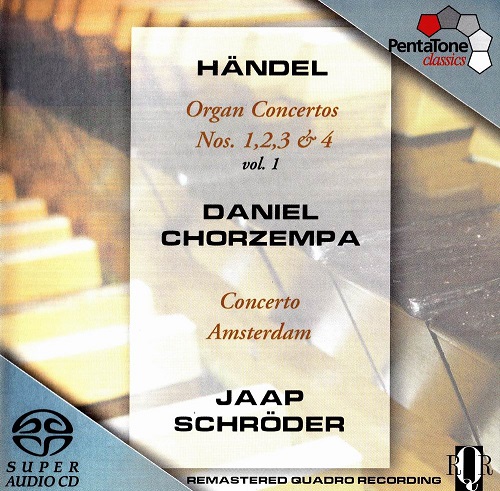

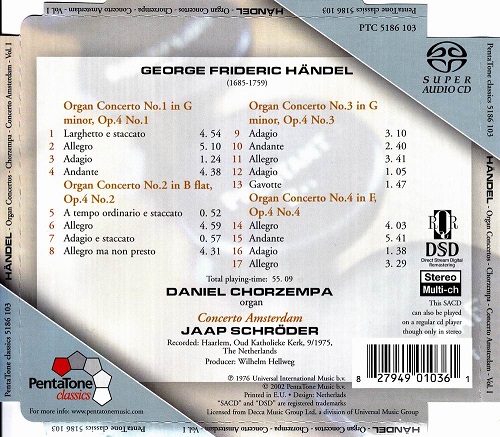
Organ Concerto No. 1 in G minor, Op. 4 No. 1
1. Larghetto e staccato
2. Allegro
3. Adagio
4. Andante
Organ Concerto No. 2 in B flat, Op. 4 No.2
5. A tempo ordinario e staccato
6. Allegro
7. Adagio e staccato
8. Allegro ma non presto
Organ Concerto No. 3 in G minor, Op. 4 No. 3
9. Adagio
10. Andante
11. Allegro
12. Adagio
13. Gavotte
Organ Concerto No. 4 in F, Op. 4 No. 4
14. Allegro
15. Andante
16. Adagio
17. Allegro
Внимание! У Вас нет прав для просмотра скрытого текста.
Vol. 2 - Nos. 5, 6, 8, 11 & 13
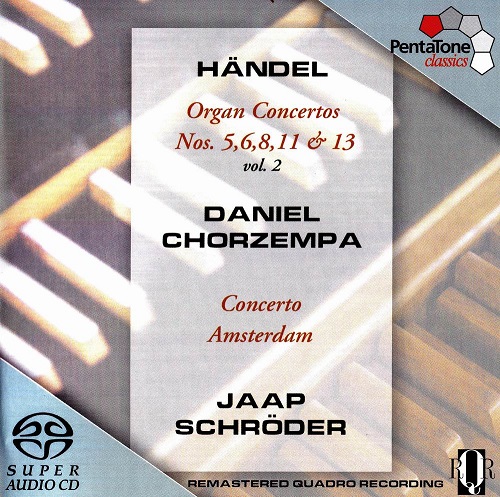

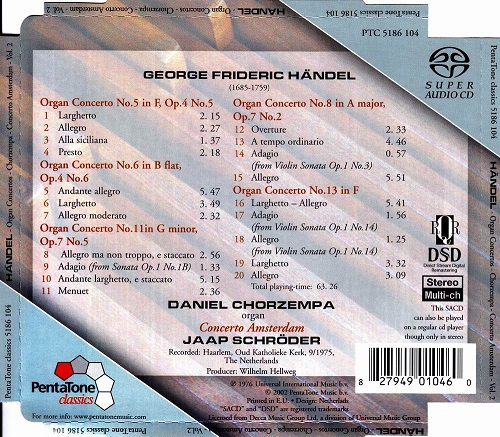
Orgelkonzert Nr. 5 F-dur op. 4 Nr. 5
1. Larghetto
2. Allegro
3. Presto
4. Alla Siciliana
Orgelkonzert Nr. 6 B-dur op. 4 Nr. 6
5. Andante allegro
6. Larghetto
7. Allegro Moderato
Orgelkonzert Nr. 11 g-moll op. 7 Nr. 5
8. Allegro ma non troppo, e staccato
9. Adagio (aus Violinsonate op. 1 Nr. 1b)
10. Andante larghetto, e staccato
11. 4. Menuet
Orgelkonzert Nr. 8 A-dur op. 7 Nr. 2
12. Overture
13. A tempo ordinario
14. Adagio
15. Allegro
Orgelkonzert Nr. 13 F-dur op. 7 Nr. 7
16. Larghetto - Allegro
17. Adagio (aus Violinsonate op. 1 Nr. 14)
18. Allegro (aus Violinsonate op. 1 Nr. 14)
19. Larghetto
20. Allegro
Внимание! У Вас нет прав для просмотра скрытого текста.
Vol. 3 - Nos. 7, 9, 10 & 12
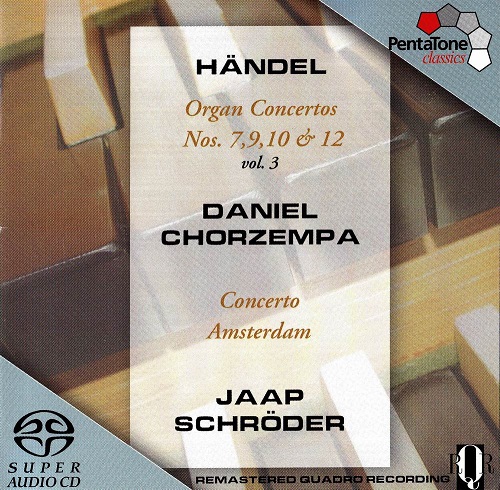

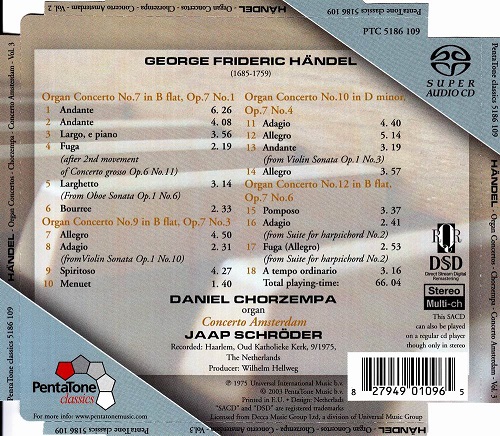
Orgelkonzert Nr. 7 B-dur op. 7 Nr. 1
1. Andante
2. Andante
3. Largo, e piano
4. Fuga
5. Larghetto
6. Bourrée
Orgelkonzert Nr. 9 B-dur op. 7 Nr. 3
7. Allegro
8. Adagio
9. Spiritoso
10. Menuet
Orgelkonzert Nr. 10 d-moll op. 7 Nr. 4
11. Adagio
12. Allegro
13. Andante
14. Allegro
Orgelkonzert Nr. 12 B-dur op. 7 Nr. 6
15. Pomposo
16. Adagio
17. Fuga. Allegro
18. A tempo ordinario
Внимание! У Вас нет прав для просмотра скрытого текста.
Vol. 4 - Nos. 14, 15 & 16

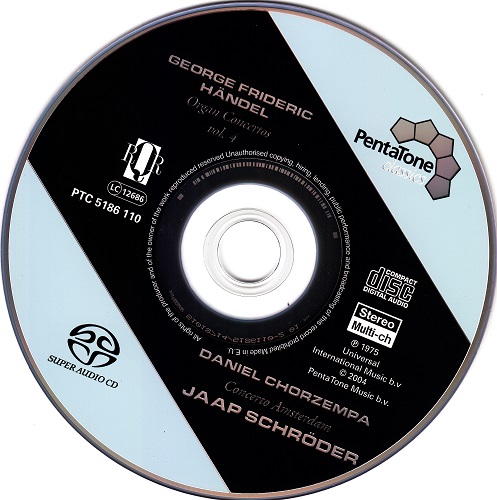
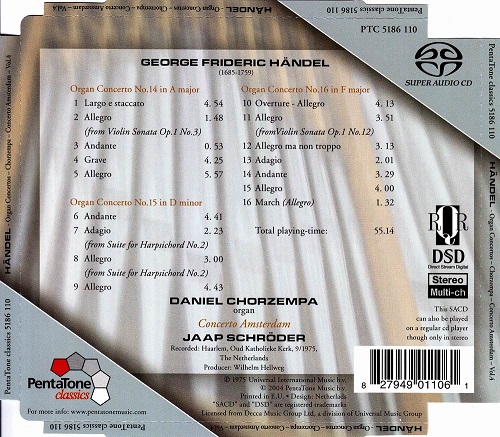
Orgelkonzert Nr. 14 A-dur op. 7 Nr. 8
1. Largo e staccato
2. Allegro (nach Violinsonate op. 1,3)
3. Andante
4. Grave
5. Allegro
Orgelkonzert Nr. 15 d-moll op. 7 Nr. 9
6. Andante
7. Adagio (nach Cembalosuite Nr. 2)
8. Allegro (nach Cembalosuite Nr. 2)
9. Allegro
Orgelkonzert Nr. 16 F-dur op. 7 Nr. 10
10. Overture - Allegro
11. Allegro (nach Violinsonate op. 1,12)
12. Allegro ma non troppo
13. Adagio
14. Andante
15. Allegro
16. Marsch. Allegro
Внимание! У Вас нет прав для просмотра скрытого текста.
Похожие новости:
Комментарии отсутствуют
Добавить комментарий!
Информация
Посетители, находящиеся в группе Гости, не могут оставлять комментарии к данной публикации.

![Daniel Chorzempa - Bach, Liszt: Organ Works (1970) [2005 SACD + HDtracks]](/uploads/posts/2016-03/thumbs/1458280914_folder.jpg)
![Henryk Szeryng - Paganini: Violin Concertos Nos. 1 & 4 (1976) [2007 SACD]](/uploads/posts/2016-01/thumbs/1452373663_folder.jpg)
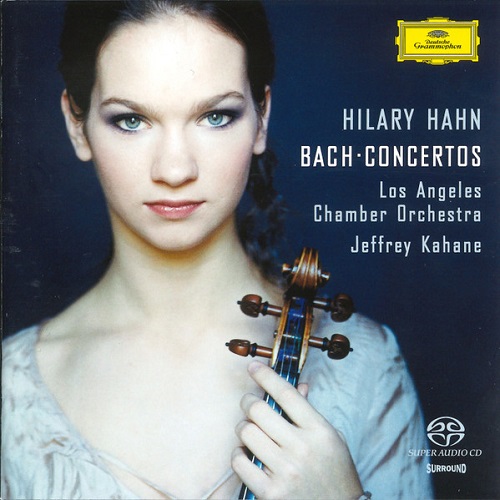
![E. Power Biggs - Rheinberger: Two Concertos for Organ & Orchestra (1973) [2017 SACD]](/uploads/posts/2017-06/thumbs/1497810264_folder.jpg)
